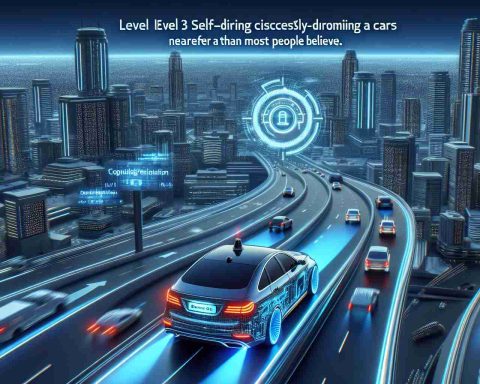Polestar Expands its Electric Lineup
The Sino-Swedish automotive brand Polestar has just unveiled exciting details about its upcoming model, the Polestar 7, which is set to launch in 2027. This latest addition will replace the current Polestar 2 and marks a strategic move to shift production from China to a European facility, which aims to sidestep hefty tariffs.
The Polestar 7 promises to feature daring new styling, reinforcing the brand’s reputation for innovative design, as stated by its head of design, Philipp Römers. He conveyed his enthusiasm about this model, emphasizing that it will embody the unique aesthetics and performance characteristics that customers have come to expect.
Expected to compete with vehicles like the Porsche Macan, the Polestar 7 is rumored to utilize a digital rearview camera in place of a traditional rear windscreen, allowing for a more dynamic design. It will be built on Geely’s advanced SEA architecture, which is already used in models like the Smart #3 and Polestar 4.
In response to lower-than-anticipated sales of its SUV lineup, Polestar is optimistic that the introduction of the Polestar 7, along with the forthcoming Polestar 5, will drive a growth trajectory of 30-35 percent over the next three years. Additionally, the brand plans to expand its retail presence by increasing locations by 75% by 2026, promising a bright future for electric driving enthusiasts.
Broader Implications of Polestar’s Expansion
Polestar’s strategic move to unveil the Polestar 7 highlights significant shifts in the automotive industry that resonate far beyond corporate frameworks. As the brand relocates production to Europe to navigate tariff challenges, this transition not only illustrates the complexity of global supply chains but also reinforces the rising influence of European environmental policies. With stringent emissions regulations in place, the move aligns with the EU’s commitment to reducing carbon footprints, prompting other manufacturers to consider similar relocations to remain competitive.
The societal implications are profound. Polestar’s innovations, such as the potential integration of digital rearview cameras, signal a technological revolution in automotive design, which may reshape consumer expectations. This aligns with broader trends toward increased digitalization and connectivity in vehicles, appealing to a generation that values both sustainability and cutting-edge technology.
Furthermore, the anticipated growth of 30-35 percent in sales reflects an evolving marketplace where electric vehicles are no longer niche but central to automotive strategy. As cities reinforce their infrastructure for electric mobility, Polestar’s expansion can serve as a model for the industry, illuminating pathways for sustainable growth in the global economy.
As we look to the future, the long-term significance of Polestar’s initiatives may well catalyze a paradigm shift, encouraging a new wave of sustainable practices not only within the automotive sector but across industries striving for environmental stewardship. This evolution could define cultural attitudes toward mobility and sustainability, paving the way for a greener global economy.
Polestar 7: The New Benchmark in Electric Performance and Style
Introduction to Polestar’s Expansion
Polestar, the innovative Sino-Swedish automotive brand, is set to enhance its electric vehicle lineup with the upcoming release of the Polestar 7, anticipated to launch in 2027. This new model is poised to replace the existing Polestar 2, marking a significant shift in production from China to a European facility as a strategic effort to avoid significant tariffs.
Design Innovations and Features
The Polestar 7 is touted to feature bold new styling that aligns with Polestar’s commitment to cutting-edge design, stated by Philipp Römers, the head of design. This model is expected to implement a digital rearview camera replacing the conventional rear windscreen, which will contribute to a more dynamic and aerodynamic design. Built on Geely’s advanced Sustainable Electric Architecture (SEA), the Polestar 7 will share a robust platform with other innovative models including the Smart #3 and Polestar 4.
Competitive Positioning and Market Strategy
Targeting the luxury SUV segment, the Polestar 7 will compete with established rivals like the Porsche Macan. Following a period of sluggish sales in its SUV offerings, Polestar hopes that the strategic introduction of the Polestar 7, alongside the upcoming Polestar 5, will catalyze a 30-35 percent growth trajectory over the subsequent three years. This ambitious growth plan also includes a significant expansion of the brand’s retail presence—aiming to increase locations by 75% by 2026, which is indicative of Polestar’s commitment to electrification and customer accessibility.
Pros and Cons
– Pros:
– Innovative design features including a digital rearview camera.
– Enhanced production efficiency with a new European facility.
– Strategic growth plan targeting increased sales and retail presence.
– Cons:
– Transitioning from China to Europe may pose challenges in supply chain logistics.
– Heightened competition in the luxury electric SUV market could pressure profit margins.
FAQs about Polestar 7
– When will the Polestar 7 be available for purchase?
The Polestar 7 is expected to launch in 2027, with detailed specifications to follow as the date approaches.
– How does the Polestar 7 compare with its predecessor, the Polestar 2?
The Polestar 7 will feature updated design and technological innovations, aiming to elevate performance and aesthetic appeal compared to the Polestar 2.
– Where will Polestar 7 be manufactured?
Production will shift to a new European facility to minimize tariffs and improve logistics.
Trends and Insights
The electric vehicle market is witnessing rapid growth, with consumer preferences shifting towards sustainable and technologically advanced solutions. Polestar’s move to introduce the Polestar 7 aligns with broader trends in the automotive industry prioritizing electric mobility. The brand’s commitment to design and performance will likely capture the attention of eco-conscious consumers looking for luxury alternatives.
Sustainability and Future Innovations
In addition to design and performance, Polestar is focused on sustainability. This initiative not only encompasses the production process but also includes utilizing renewable materials and aiming for a carbon-neutral footprint by 2030.
For more information on Polestar’s innovative vehicles and their impact on the automotive market, visit Polestar.














